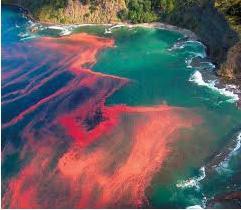According to experts mysterious sites around the world were created by ancient civilization with the help of advanced knowledge and technology and that possibly can be more advanced than our current one. Some do not believe that there was any so much advanced ancient civilization on earth and ancient astronauts who came down from heaven handed all of the superb knowledge down to us
Most of scientists do not believe on up stated ideas they try to explain ancient enigmas on the ground of religion and ritual.
According to Discovery Channel there are 3 places, which are the Most Enigmatic Places in the World. But aside from that there are so many other places around the world that capture our imagination because they seem to be so mysterious.
1. Stonehenge
Stonehenge is one of the most popular mysterious places in the world.
It’s a megalithic monument on the Salisbury Plain in Southern England. It’s composed of 30 upright stones, which are called sarsens, each stone is ten feet tall with more 45 tons weight; they are aligned in a circle with 30 lintels (each lintel weight is 6 tons) perched horizontally atop the sarsens in a continious circle. Inside the outer circle there another circle composed of similar stones and constructed in same fashion.
There are so many great monuments around the world now question is that what is so special about Stonehenge? Who built this? Is it was an astronomical observatory, a religious site or something supernatural? There are no exact answers for these questions.
According to some experts Druids built Stonehenge, but they can’t tell about the builders. It was constructed between 5,000 and 3,000 years ago, from that it’s easy to know that it was built before that the first metal tools were invented.
Apart from that who built this stone monument, but that anyone can understand that in its construction thousands of people were involved. Dragging huge stones from Marlborough Downs, 30 Km to the south of Stonehenge that is remarkable achievement and amazing feat of engineering.
Stonehenge is even mentioned in Arthurian legend that names Merlin as the engineer.
Another interesting thing is that Stonehenge is built on such angle that the sun rising over the horizon appears to be perfectly placed between gaps in the megaliths.
2. Nazca Lines
Nazca Lines the excellent group of geolyphs in the world located in Nazca Desert, between the towns of Nazca and Palpa on the Pampas de Jumana in Peru. Engraved on the surface of the desert pampa sand about 300 figures made of straight lines, geometric shapes and pictures of animals and birds. All these engraved drawn images on the desert can be seen only from the air.
There are three mysterious features about Nazca Plateau:
· The straight lines in the pattern of crossing lines in all directions are many kilometers long.
· Many of lines form geometric shapes like angles, triangles, bunches, spirals, rectangles, wavy lines, etc.
· Those lines form animal patterns also.
It is believed that the people called Nasca drew these lines but how they created this wonder of the world no one had explained. As the Nazca lines cannot be viewed except from the air it is assumed that the Nazca people had never seen their work from this vantage point.
3. Easter Island
Easter Island, which is called Rapa Nui in local language, is located in the southeastern Pacific Ocean and it’s under control of Chile government.
It is small, hilly, treeless island of volcanic origin. It is one of most isolated inhabited territory on earth but this aspect is cause of its fame, the thing which makes it apart from any other place on earth is its hundreds of megalithic human like statues that face inland from the shore. These statues are called moai.
Approximately all moais are carved out of compressed, easily worked volcanic ash. In these moais largest ones weight is 165 tons and its height is almost 22 meters.
It really looks mysterious that on a barren island how these mega statues were carved? Who built these and why? And how such gigantic statues were carved?
Scholars are unable to answer these questions some suggest that Easter Island inhabitants, the Rapanui who were came from Polynesia.
Easter Island is also known as Te-Pito-O-Te-Henua, meaning “The Navel of the World” and as Mata-Ki-Te-Rani, meaning “ Eyes Looking at Heaven”.





























